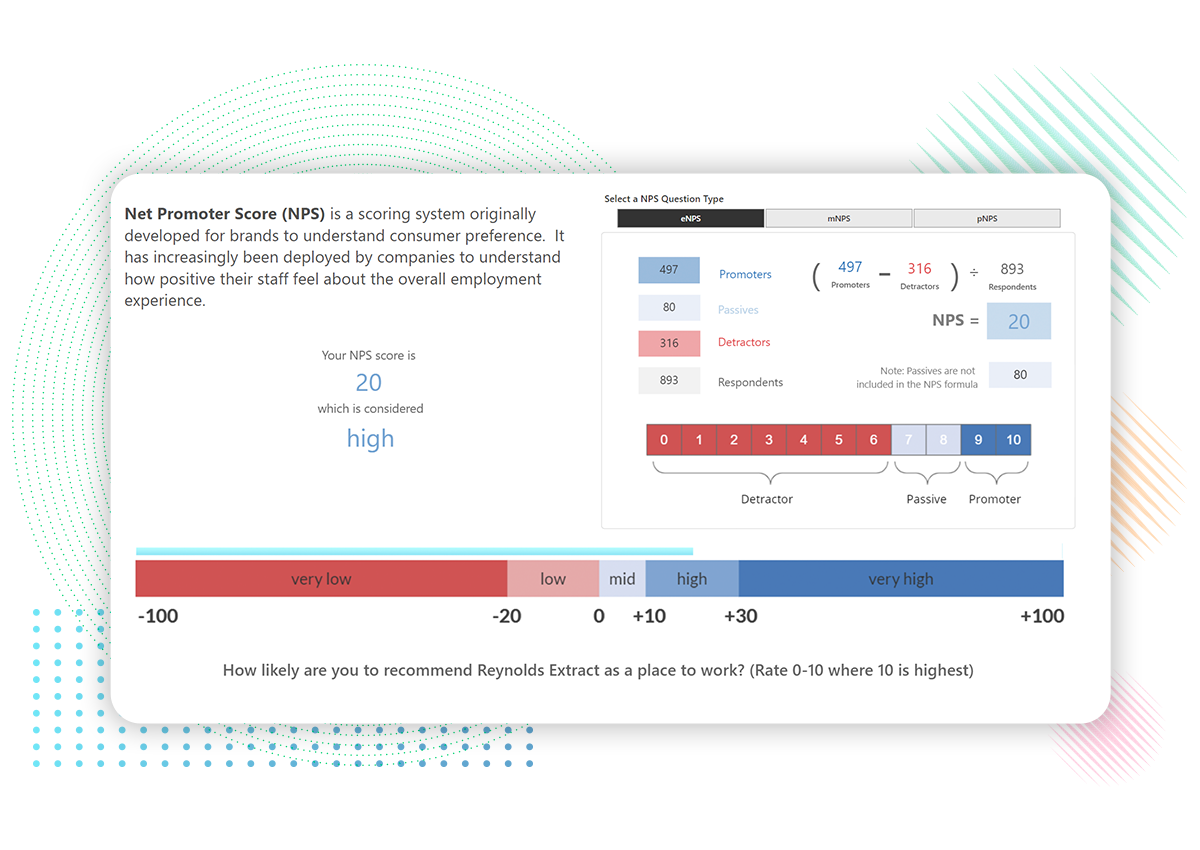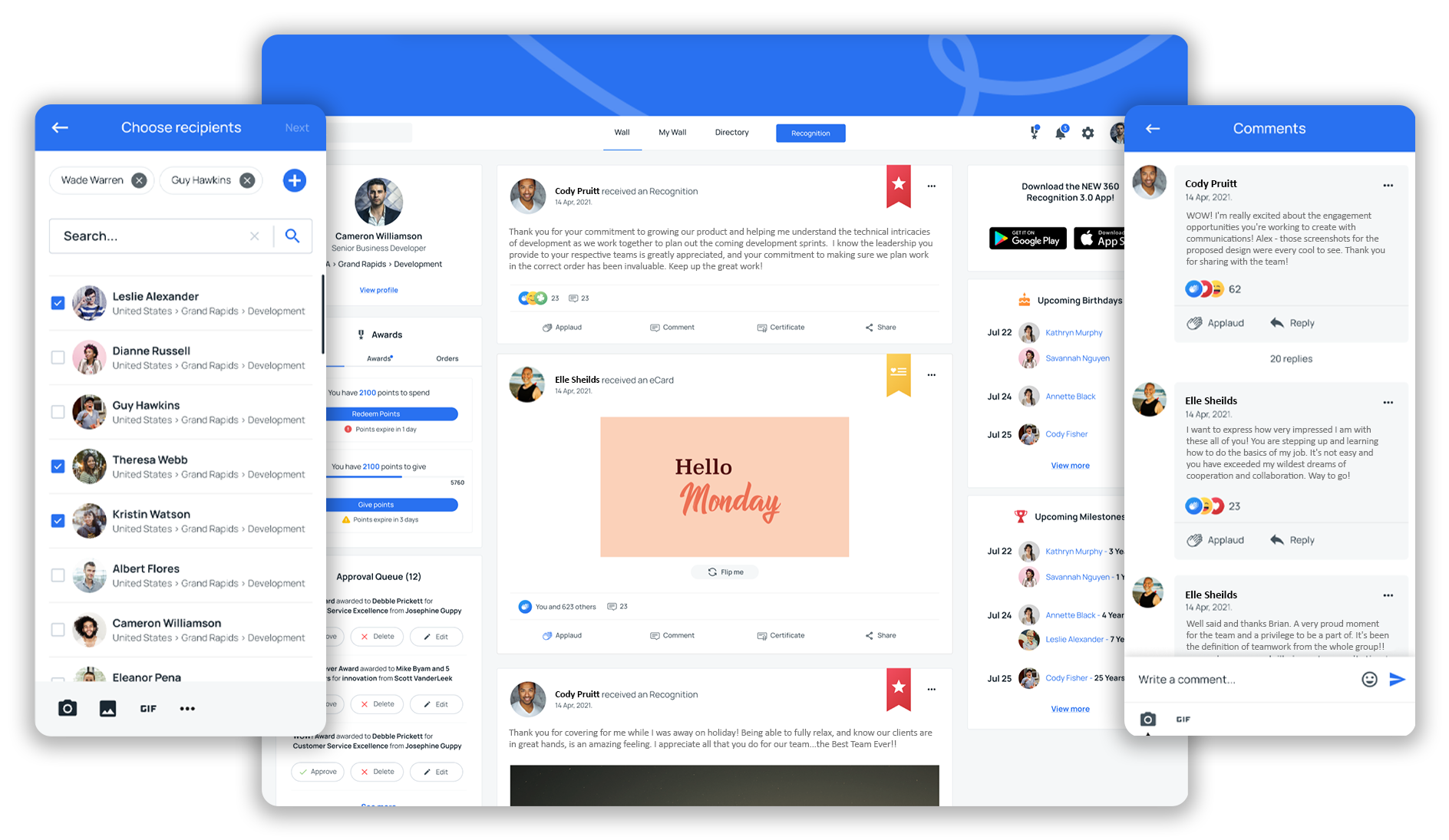May 20, 2024


DEI - or diversity, equity, and inclusion - is a phrase that's grown exponentially popular in the past few years. DEIB, on the other hand, is one many people are less familiar with.
Here, we'll discuss what DEI and DEIB are, what role they play in the workplace, and how you can adopt more diversity in your company culture.
DEI vs. DEIB
We've already established that DEI stands for Diversity, Equity, and Inclusion. It's a powerful concept that aims to create a more just and empowering work environment, especially for those who have historically faced underrepresentation or discrimination.
Variations of this term exist, like D&I (Diversity and Inclusion), DIB (Diversity, Inclusion, and Belonging), DEB (Diversity, Equity, and Belonging), and DEIB (Diversity, Equity, Inclusion, and Belonging. While they share similar goals, each term has slightly different meanings.
Here's a breakdown of the core concepts:
Diversity celebrates the many ways people differ. This includes race, gender identity, sexual orientation, age, mental and physical ability, religion, socioeconomic background, and more.
Inclusion focuses on creating inclusive workplaces and a welcoming environment where everyone feels valued, respected, and supported, regardless of their background.
Equity goes beyond simply giving everyone the same thing. It recognizes that some people may need more resources or support to succeed due to past disadvantages. Equity aims to level the playing field by allocating resources based on need.
Belonging is the feeling of safety, acceptance, and connection within a workplace. It can be thought of as the natural consequence when diversity, equity, and inclusion are successfully implemented.
One way to think of these concepts is with a metaphor created by Verna Myers, a leading expert in diversity, equity, and inclusion.
“Diversity is being invited to the party. Inclusion is being asked to dance.” We like to think of DEIB, on the other hand, as feeling empowered enough to ask someone to dance.
Why DEIB is Important
Prioritizing a diverse workforce is more than just an ethical expectation, there's also data to suggest it makes for better business outcomes as well.
According to research from Great Place to Work, when employees feel like they belong at work they feel valued and are:
- 3x more likely to look forward to coming to work
- 9x more likely to believe people are treated fairly regardless of their race
- 5x more likely to want to stay at their company a long time
- 3x more likely to say their workplace is fun
Delloite’s research found that an equitable workplace is not only beneficial for workers, but it's also good for business. Belonging at an inclusive work environment can lead to:
- 56% increase in job performance
- 50% reduction in turnover risk
- 167% increase in employer net promoter score
- 75% decrease in sick days
Additional research has found:
- Companies with higher diversity tend to outperform their peers. Studies show a positive correlation between diverse talent (gender and ethnicity) and financial metrics like revenue and cash flow [Source: LinkedIn Learning].
- Diverse talent is also more innovative and tend to make better decisions due to the wider range of perspectives brought to the table [Source: Deloitte].
- When employees feel included and valued through DEIB initiatives, they tend to be more engaged, productive, and loyal [Source: Built In].
- Around two-thirds of employees prioritize DEIB programs when choosing an employer [Source: Glassdoor].
- Millennials and Gen Zers represent a significant portion of the workforce and are more likely to seek out employers with strong DEIB initiatives [Source: EY].
Overall, this research paints a clear picture: DEIB is not just a social good, it's good for business. By fostering a diverse and inclusive workplace, organizations can unlock a competitive edge, attract top talent, and achieve greater success.


5 Tips for Creating an Inclusive Workplace Through DEIB Initiatives
Now that you have an understanding of what DEIB is and why it's an important concept to prioritize at work, we'll dive into what you can do to start your DEIB initiatives off on the right foot.
1. Establish Goals
Before getting up and running, it's important to first consider what it is specifically you'd like to achieve through your DEIB efforts.
Assess Your Current State:
Start setting your goals by assessing where you are today.
- Gather data on the demographics of your workforce across various categories like race, gender, age, etc. Analyze hiring, promotion, and retention rates to identify any disparities.
- Conduct anonymous employee surveys to understand their experiences and perceptions regarding DEIB in the workplace. This can reveal areas where employees feel excluded or unsupported.
- Organize focus groups with diverse employee groups to gain deeper insights and qualitative data on their experiences.
RELATED: 15 Best Employee Survey Tools to Boost Engagement in 2024
Determine What You Want to Achieve:
Based on the assessment of your current state, define your DEIB goals. Here are some areas to consider:
- Diversity Goals: These goals will aim to increase the presence of underrepresented groups in specific areas like leadership, management, or technical roles.
- Equity Goals: Focus on creating a level playing field by providing targeted resources or programs for those who may need extra support.
- Inclusion Goals: Develop initiatives that foster a sense of belonging and ensure everyone feels valued and respected.
Prioritize and Set Timelines:
Be sure to not overwhelm yourself or your team – prioritize your goals based on impact and feasibility. Set realistic timelines for achieving each goal. Remember, it's better to start with achievable goals and build momentum than set unrealistic targets that lead to discouragement.
2. Get Leadership Buy-In
Just like any major change, true progress in diversity, equity, inclusion, and belonging requires leadership buy-in. However, C-suite executives, managers, and all leaders need to go beyond words of support to create an inclusive environment - they need to champion DEIB efforts openly and lead by example.
Research shows that 60% of employees crave leadership that speaks up on social and political issues. But remember, this is ultimately a call to action.
Meaning, that it's not enough to offer mental health days, it's encouraging employees to utilize them and taking some yourself.
It's not just having a rainbow version of your logo in June, it's understanding the significance of Pride Month and educating team members about it. It's not just saying your company doesn't tolerate discrimination, it's actively speaking up and addressing instances when you see them.
While encouraging employees to embrace DEIB principles is important, seeing leaders actively strive for change is even more powerful. This inspires trust, fosters a culture of inclusion, and demonstrates a genuine commitment to building a better workplace for everyone.
3. Establish Employee Resource Groups (ERGs)
Employee Resource Groups, or ERGs, are voluntary, employee-led groups formed within a company. They bring together employees who share a common identity, such as race, gender, sexual orientation, national origin, or disability.
The main goals of an ERG are to:
- Promote a sense of belonging and support for their members within the company.
- Advocate for inclusivity in the workplace culture.
- Help employees with career development and professional growth.
Companies with strong and active ERGs are typically seen as more progressive and socially responsible, too. This can enhance their brand image, reputation, and make a company more attractive to top talent from diverse backgrounds.
By demonstrating a commitment to inclusion, ERGs can help companies recruit and retain a wider pool of qualified employees.
4. Establish an Employee Recognition Program
Employee recognition programs are beneficial for all companies, but they can play a unique role in supporting DEIB throughout an organization.
Social recognition programs that encourage peer-to-peer recognition can help shed light on employees who may otherwise get overlooked. These might be employees who shy away from socializing due to mental health diagnoses, language barriers, or cultural norms.
A peer-to-peer recognition program allows those who work closest to these people to show their support and appreciation through an equal access platform.
RELATED: What is Social Recognition?
5. Communication and Transparency
The last part of getting your DEIB program up and running is to communicate your DEIB goals and action plan clearly and transparently to all employees.
Regularly update them on progress, celebrate your achievements, and don't be afraid to acknowledge challenges along the way. Taking ownership for mistakes demonstrates a learning culture, which is critical for real progress.
Maintaining Momentum:
- Regular Communication: Continuously communicate your DEIB goals and progress to employees.
- Accountability: Hold leaders and managers accountable for achieving diversity goals within their teams.
- Open Feedback: Create channels for employees to provide feedback on your DEIB efforts and suggest improvements.
- Celebrate Diversity: Recognize and celebrate the diverse experiences and contributions of your employees.


Common Pitfalls of DEIB Programs
As with any change, there will be some bumps along the way. And while it's impossible to predict and prepare for every possible hiccup, there are some common issues you can prepare for.
Problem: Lack of buy-in from top leadership
Action Steps:
Truly building an inclusive workplace requires active participation and support from C-suite executives and managers. Without their commitment, DEIB efforts can be seen as performative or lose momentum. So, to help gain real and consistent leadership buy-in, try these data-driven tactics:
- Financial Performance: Present data and research that demonstrate the positive correlation between diversity and strong financial metrics, like revenue and innovation.
- Talent Acquisition and Employee Retention: Highlight the competitive advantage a diverse workforce offers in attracting and retaining top talent from a wider pool.
- Enhanced Innovation: Bring real-life examples of how diverse teams bring a broader range of perspectives, leading to more creative solutions and problem-solving.
Problem: Focus on appearance over action
Action Steps:
Because DEIB has grown in popularity over the past few years, in order to stay competitive, some companies end up prioritizing the appearance of DEI efforts over making real change. To avoid this common pitfall, consider:
- Public announcements: Public pronouncements about DEIB and you're goals are a good way to hold the team accountable. Tell employees what your goals are and provide benchmarking along the way.
- Invest in training and resources: Don't expect unconscious bias to disappear overnight. Allocate resources for ongoing training on unconscious bias, inclusive leadership, and cultural competency for all levels of employees.
- Walk the walk: Leaders, again, need to lead by example. This means actively participating in DEIB initiatives and demonstrating a genuine commitment to change.
Problem: Metrics and Measurement
Action Steps:
Tracking progress and measuring the impact of DEIB initiatives is essential. However, defining and measuring success in DEIB can be complex. To start, reference your original goals.
Whether they were to increase diversity in the hiring process or increase the sense of belonging throughout the entire workforce, your original goals will inform which metrics you follow. Common metrics used to track DEIB are:
- Recruitment Diversity: Track demographics of applicants, interview pools, and new hires across various categories like race, gender, ethnicity, age, sexual orientation, socioeconomic status etc.
- Leadership Commitment: Monitor leadership participation in DEIB training programs and their involvement in DEIB initiatives.
- Resource Allocation: Measure the budget and resources dedicated to DEIB programs, training, and employee resource groups (ERGs).
- Workforce Demographics: Track the overall amount of diverse employees of your workforce across various levels and departments.
- Retention Rates: Analyze how retention rates differ among different demographic groups. High turnover rates for underrepresented groups might indicate inclusion issues.
- Promotion Rates: Monitor promotion rates across different identity groups to ensure equitable opportunities for advancement.
- Employee Engagement Surveys: Conduct anonymous surveys to gauge employee perceptions of inclusion, belonging, and overall employee satisfaction with DEIB efforts.
- Employee Resource Group Participation: Track participation rates and engagement levels within employee resource groups.
RELATED: What is an Employee Engagement Survey? And Why Should You Care?
Going Forward
In today's environment, working towards improving DEI is not only good business sense, but it demonstrates authenticity in company values and shows employees they're valued.
While your DEI journey won't be free of bumps, curves, and accidents, you don't have to do it all alone—we're here to help. Terryberry has designed a comprehensive Employee Engagement Platform to help evolve your company culture.
Whether you need recognition software, a rewards platform, or engagement survey solutions, we've got you covered. Schedule a demo to see how you can transform employee engagement with one powerful platform.




